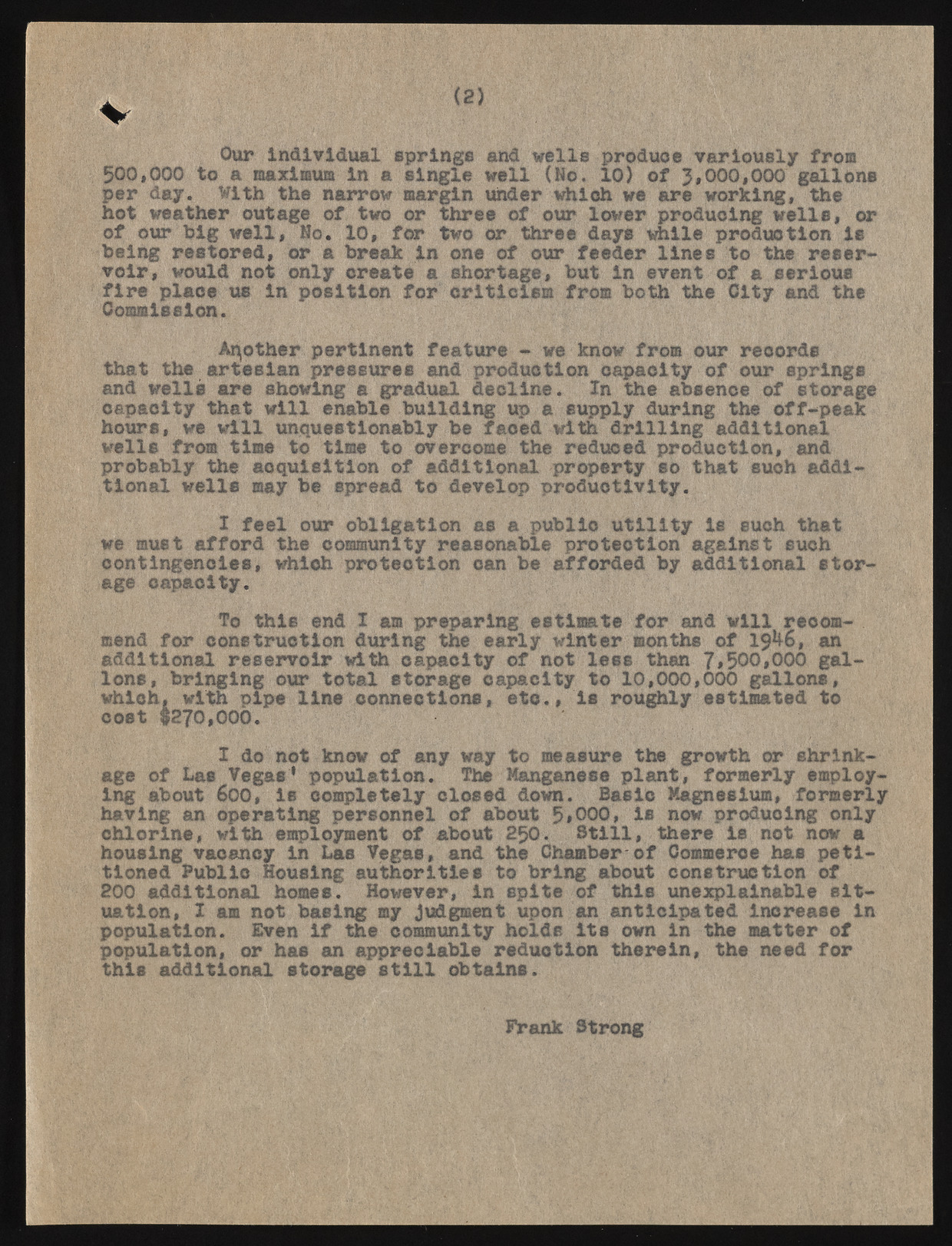Copyright & Fair-use Agreement
UNLV Special Collections provides copies of materials to facilitate private study, scholarship, or research. Material not in the public domain may be used according to fair use of copyrighted materials as defined by copyright law. Please cite us.
Please note that UNLV may not own the copyright to these materials and cannot provide permission to publish or distribute materials when UNLV is not the copyright holder. The user is solely responsible for determining the copyright status of materials and obtaining permission to use material from the copyright holder and for determining whether any permissions relating to any other rights are necessary for the intended use, and for obtaining all required permissions beyond that allowed by fair use.
Read more about our reproduction and use policy.
I agree.Information
Digital ID
Permalink
Details
More Info
Rights
Digital Provenance
Publisher
Transcription
i i l Our individual springe and w ells produce variously from 500,000 to a maximum in a single well (No. 10) o f 3 , 000,000 gallons per day. With the narrow margin under which we are working, the hot weather outage of two or three of our lower producing v e lle , or of our b ig w ell, No. 10, for two or three days while production is being restored, or a break in one of our feeder lin es to the reserv o ir, would not only ereate a shortage, but in event o f a serious f ir e place us in position fo r criticism from both the City and the Oo.mmlselon^S Another pertinent feature - we know from our records that the artesian pressures and production capacity o f our springs and w ells are showing a gradual d eclin e. In the absence of storage capacity that w ill enable building up a supply during the off-peak hours, we w ill unquestionably be faced with d r illin g additional wells from time to time to overcome the reduced production, and probably the acquisition o f additional property so that such addition al w ells may be Spread to develop productivity. I fe e l our obligation as a public u t ilit y Is such that we must a fford the community reasonable protection against such contingencies, which protection can be afforded by additional storage capacity || To this end I am preparing estimate fo r and w ill reoom-mend fo r construction during the early winter months o f 19 ^6 , an additional reservoir with capacity o f not less than 7 *500,000 gallons , bringing our tota l storage capacity to 10,000,000 gallons, which, with pipe lin e connections, e t c ., is roughly estimated to cost $270 ,000. X do not know of any way to measure the growth or shrinkage o f Lae Vegas* population. The Manganese plant, formerly employing about 600, is completely closed down. Basic Magnesium, formerly having an operating personnel o f about 5 ,$00, is now producing only ch lorin e, with employment o f about 25 0 . S t ill, there la not now a housing vacancy in Las Vegas, and the Chamber-of Commerce has p e titioned Public Housing authorities to bring about construction of 200 additional homes. However, in spite of this unexplainable s it uation, I am not basing my Judgment upon an anticipated increase in population. Even i f the community holds it s own in the matter of population, or has an appreciable reduction therein, the need fo r th is additional storage s t i l l obtains. Frank Strong

